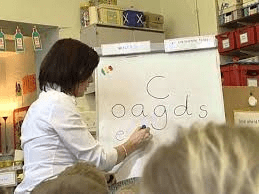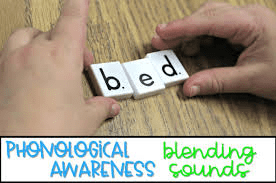How Jolly Phonics works for Children?
Jolly phonics is one of the best mentors when it comes to teaching languages to children. Learning to read, write, and understand a language is a complex process. Even as an adult, learning a new language is hard. So, when it comes to teaching language to a child, teachers have to be skilled and patient.
But How does a child learn a language?
That’s where Phonics Comes in.
To teach a child how to read and write, the method of phonics is used. With phonics, children learn to use and identify the different sounds that distinguish one word from another in the English language.
It is done by learning the relationship between the sounds of the spoken language, and the letter or syllables of the written language.
What is Jolly Phonics?
Jolly Phonics uses the same principle as Phonetics but at the basic stages of learning a language. Here, teachers use interactive and fun visual and audio aids like poems, nursery rhymes, and games to teach the sounds of the words in the language.
Jolly Phonics is a fun way to learn for children as it encourages them to learn and enjoy at the same time.
How Does Jolly Phonics work?
Jolly Phonics is a fun and child-centered approach to learn as it uses the learning aids that interest children. It uses multi-sensory actions for all the 42 sounds of the English language and help children associate the sounds with the letters, letter group, and syllables.
Developed by Sue Lloyd and Sara Wernham, This program has proven to be the most effective way of Learning any language as it’s the fastest way to learn when compared to regular Phonetics. Considering this, schools and trainers across the world have adopted this method.
“The Jolly Phonics children’s reading skills were 12 months above the level expected for their age”
Now let us understand some technicalities.
In the English language, there are 26 letters and 42 letter sounds. These 42 letter sounds are phonic building blocks of the English language.
While learning, students work on 5 Key skills. These skills form the basis of learning the language.
These skills are:-
- Learning the letter sounds
- Learning letter Formation
- Blending
- Segmenting
- Tricky words.
Learning Letter sounds
We know that there are 42 letter sounds in English. What makes jolly phones effective is the fact that these letters’ sounds are not taught in alphabetical order. The 42 sounds are divided into 7 groups with 6 sounds in each group. These groups are made in such a way that children can get the most out of the alphabetical sounds. These sounds are taught group-wise so that children can learn and use them easily.

Jolly Phonics Letter sound groups
Learning Letter formation
After the introduction to letter sounds, children are taught to form and write these letters. Since jolly Phonics is a multi-sensory method, initially children are taught to form letters in the air along with teachers, and then other tools may be used to reinforce the learning.
With regular practice, children can learn to form all the letters correctly in the first twelve weeks.

learning letter formation
Blending
A word is formed when different sounds of letters are put together. This process of putting sounds together is called blending. While teaching, initially each word is articulated sound to sound and children are given the opportunity to hear the word.
Once they start understanding, they can form these words by blending the sounds themselves.

blending and segmentation in jolly phonics
Segmentation
Various sounds put together to make a word and it is crucial that children understand each sound the word is made of. Blending and segmentation are taught at the same time so that children can understand the phonic components of a word and become familiar with assembling and breaking down the sounds within words.
Tricky Words
There are some special words or tricky words in English that have irregular spelling. Teaching these words can be tricky (hence the term Tricky words) as they cannot be worked out by blending and segmentation. So, these are taught separately to the children by gradually introducing them.
As you can see Teaching a language is not an easy job. It requires persistence, patience, and skill. The good news is Jolly phonics makes the process easier for the children and for trainers. Since jolly phonics is such a popular and interactive method, many trainers of language are now shifting to Jolly phonics.
If you are a parent who wants to teach their child through jolly phonics or an aspiring trainer who wants to learn how to teach using jolly phonics, check out our services.
Also, read this article here
